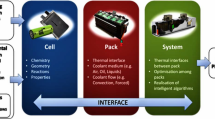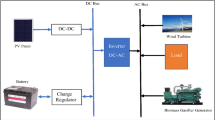Abstract
Combined cooling, heat, and power (CCHP) system offers numerous potential advantages for the supply of energy to residential buildings in the sense of improved energy efficiency and reduced environmental burdens. To realize the potential for being more beneficial, however, such systems must reduce total costs relative to conventional systems. In this study, a linear programming optimization model was presented for optimum planning and sizing of CCHP systems. The purpose of the model is to give the design of the CCHP system by considering electrical chiller and absorption chiller simultaneously in economic viewpoint. A numerical study was conducted in Tehran to evaluate the CCHP system model. The linear programming (LP) model determines the optimal sizes of the CCHP equipment by considering capital cost of the system. It showed that by considering electricity buyback, the optimum size of the electrical chiller decrease and the optimum size of the combined heat and power (CHP) unit and the absorption chiller increase dramatically with respect to without electricity buyback. Also, the LP model determines the optimal operation strategy of the system by neglecting capital cost. The optimally operated CCHP system encompassing electrical and absorption chiller could result in an 18% decrease in operating cost when compared to a CHP system encompassing electrical chiller only. Without electricity buyback, the profitability of CCHP was 23%, while with electricity buyback, profitability became 39%. Furthermore, a sensitivity analysis was conducted to show how the important parameters affect the entire system performance.












Similar content being viewed by others
References
Burzynski, R., Crane, M., and Yao, R. (2010). A review of domestic hot water demand calculation methodologies and their suitability for estimation of the demand for Zero Carbon houses. Proceedings of Conference: TSBE Eng D Conference, TSBE Centre, University of Reading, Whiteknights Campus, RG6 6AF.
Electric Power Ministry of Iran. (2012). Iran’s energy balance sheet 2011. Available from: http://www.tavanir.org.ir
Ezzatneshan, E., Arami, M., Parhizkar, T., Hosseni Kordkheili, A., & Sattari, S. (2014). Evaluation of optimum performance and economic analysis of micro CHP systems in different sectors in Iran. International Journal of Energy & Technology, 6(4), 1–10.
Fang, T., & Lahdelma, R. (2016). Optimization of combined heat and power production with heat storage based on sliding time window method. Applied Energy, 162, 723–732.
Hajabdollahi, H., Ganjehkaviri, A., & Nazri Mohd Jaafar, M. (2015). Assessment of new operational strategy in optimization of CCHP plant for different climates using evolutionary algorithms. Journal of Applied Thermal Engineering, 75, 468–480.
Han, G., You, S., Ye, T., Sun, P., & Zhang, H. (2014). Analysis of combined cooling, heating, and power systems under a compromised electric–thermal load strategy. Journal of Energy and Buildings, 84, 586–594.
IEA (International Energy Agency) (2013). Key world energy statistics.
Iranian Electricity Management. (2010). Transmission and distribution. Available from: http://www.tavanir.org.
Iranian Fuel Conservation Organization web site, 2010 http://www.ifco.org.
Kong, X. Q., Wang, R. Z., Li, Y., & Huang, X. H. (2009). Optimal operation of a micro-combined cooling, heating and power system driven by a gas engine. Journal of Energy Conversions and Management, 50, 530–538.
Kritsanawonghong, S., Gao, W., & Iamtrakul, P. (2014). Feasibility study of optimal sizing of micro cogeneration system for convenience stores in Bangkok. Journal of Energy and Power Engineering, 6, 69–81.
Li, M., Mu, H., Li, N., & Ma, B. (2016). Optimal design and operation strategy for integrated evaluation of CCHP (combined cooling heating and power) system. Energy, 99, 202–220.
Mehdinejad, M., Mohammadi-Ivatloo, B., & Dadashzadeh-Bonab, R. (2016). Energy production cost minimization in a combined heat and power generation systems using cuckoo optimization algorithm. Energy Efficiency. doi:10.1007/s12053-016-9439-6.
Ren, H., Gao, W., & Ruan, Y. (2008). Optimal sizing for residential CHP system. Journal of Applied Thermal Engineering, 28, 514–523.
Ren, H., Gao, W., Zhou, W., & Nakagami, K. (2009). Multi-criteria evaluation for the optimal adoption of distributed residential energy systems in Japan. Journal of Energy Policy, 37(12), 5484–5493.
Ren, H., & Gao, W. (2010). Economic and environmental evaluation of micro CHP systems with different operating modes for residential buildings in Japan. Journal of Energy and Buildings, 42(6), 853–861.
Sanaye, S., & Hajabdollahi, H. (2013). 4E analysis and multi-objective optimization of CCHP using MOPSOA. Proceedings of the Institution of Mechanical Engineers, Part E: Journal of Process Mechanical Engineering. doi:10.1177/0954408912471001.
Seijo, S., del Campo, I., Echanobe, J., & García-Sedano, J. (2016). Modeling and multi-objective optimization of a complex CHP process. Applied Energy, 161, 309–319.
Seo, H., Sung, J., Oh, S. D., Oh, H. S., & Kwak, H. Y. (2008). Economic optimization of a cogeneration system for apartment houses in Korea. Journal of Energy and Buildings, 40, 961–967.
Shaneb, O. A., Coates, G., & Taylor, P. C. (2011). Sizing of residential μ-CHP systems. Journal of Energy and Buildings, 43, 1991–2001.
Shaneb, O. A., Taylor, P. C., & Coates, G. (2012). Optimal online operation of residential MCHP systems using linear programming. Journal of Energy and Buildings, 44, 17–25.
Teymouri Hamzehkolaei, F., & Sattari, S. (2011). Technical and economic feasibility study of using micro CHP in the different climate zones of Iran. Journal of Energy, 36(8), 4790–4798.
Tichi, S. G., Ardehali, M. M., & Nazari, M. E. (2010). Examination of energy price policies in Iran for optimal configuration of CHP and CCHP systems based on particle swarm optimization algorithm. Journal of Energy Policy, 38, 6240–6250.
Author information
Authors and Affiliations
Corresponding author
Rights and permissions
About this article
Cite this article
Kialashaki, Y. A linear programming optimization model for optimal operation strategy design and sizing of the CCHP systems. Energy Efficiency 11, 225–238 (2018). https://doi.org/10.1007/s12053-017-9560-1
Received:
Accepted:
Published:
Issue Date:
DOI: https://doi.org/10.1007/s12053-017-9560-1




